2024 Update… With each passing week, my paver walkway continued to cave in – and I was frankly getting more than a little frustrated.
I was definitely worried about someone tripping and getting hurt because the walkway was becoming less and less stable, and even worse: I had no idea how to make the burrowing stop. Can you see the depression in the stones in the middle of the following shot?
This problem started a couple of years ago, at roughly the same time the groundhogs appeared on my property. (But this isn’t about groundhog damage – that’s another story entirely for some other day.) This is about chipmunk burrowing, I’m almost certain. I can find humane deterrent products on Amazon like peppermint oil and solar powered chipmunk repellers. Even humane chipmunk traps – one of which is pictured below. But I cannot personally speak to the efficacy of these as of yet. So instead, I’m addressing this more fundamentally for now…
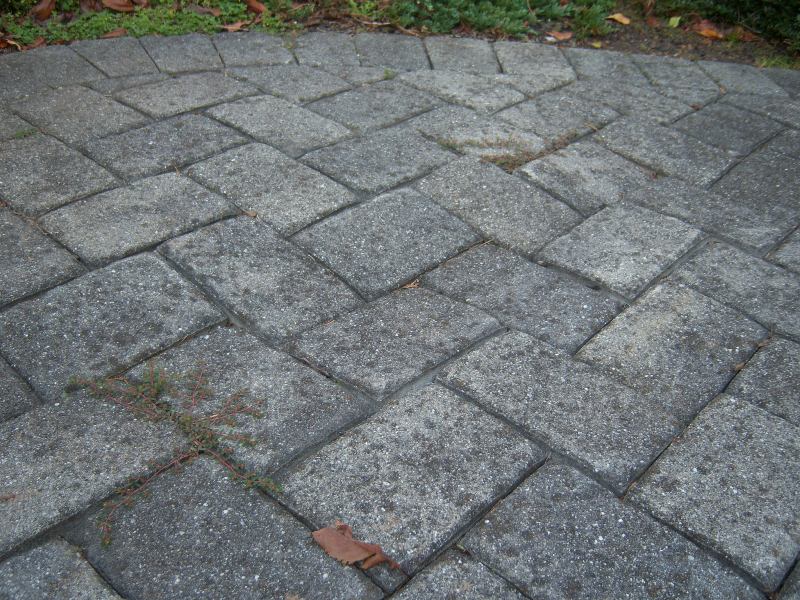
Chipmunk Highways under My Pavers?
I wrote previously about my paver walkway burrowing pest, when I had to replace a tiny sliver of stone that was lost and fill-in a little bit of undermined soil. I frankly thought it was a sort of cute… Chipmunks are nice little animals, after all.
But this is so much worse now. Having removed a somewhat larger area of pavers this time, you can see the extent of the burrowing:
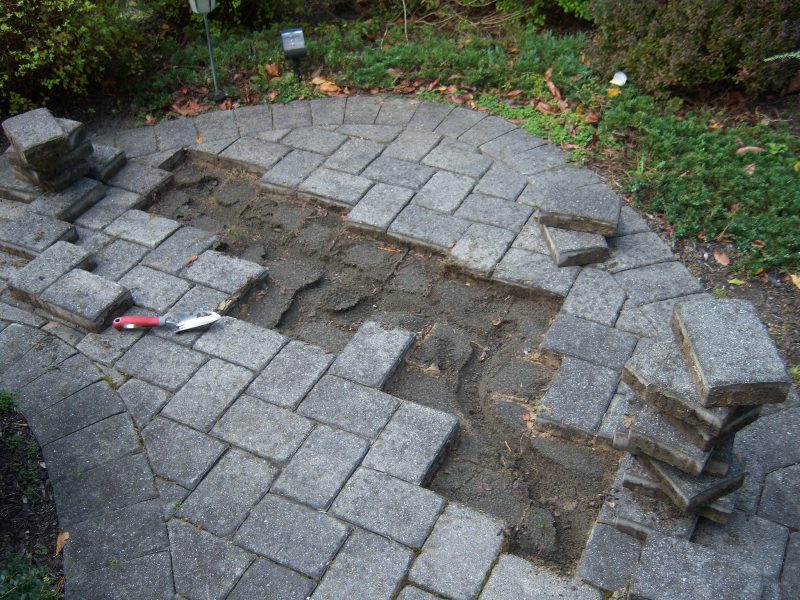
For the life of me, I can’t imagine where all the missing soil and stone dust might be, but clearly quite a lot is missing.
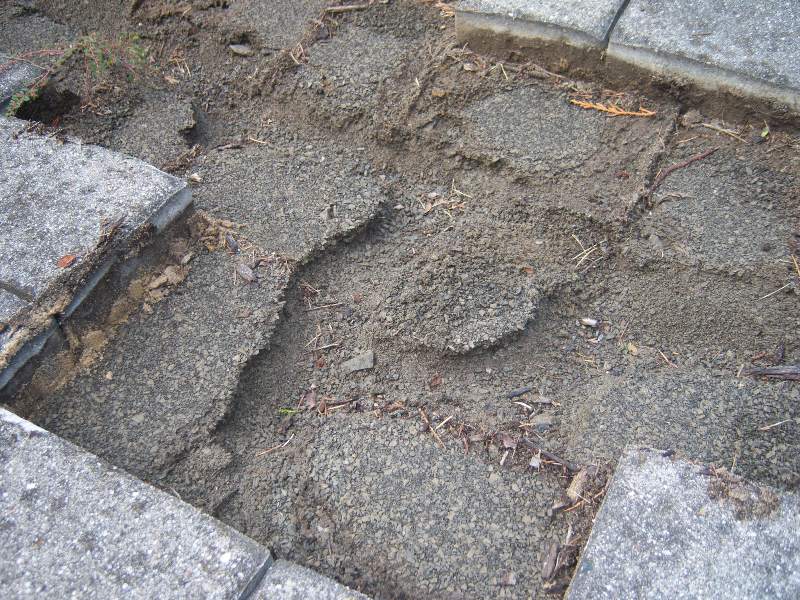
So, here’s where the frustration got the better of me. In the shots that follow, I’m going to show what I did to remedy this situation. I’m not 100% sure it was the best thing to do, and I’m not at-all sure it’s going to last. So, I would invite anyone reading to please add suggestions, experiences and wisdom in the comment area below.
Any masons reading out there? If so – your inputs would be particularly appreciated.
For me, though – I was having guests over within the week, so I dealt with the problem, for better or worse, as follows…
Concrete and Polymer Paver Jointing Sand
Starting with the basics – I went right to concrete. My primary goal was to solidify the walkway for the short-term and hope that perhaps it would help (at least somewhat) for the long-term as well.
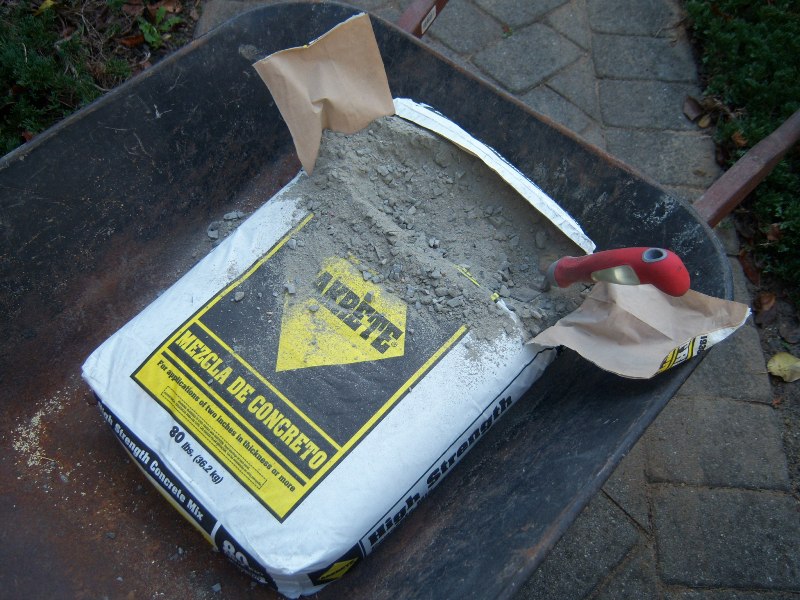
So, I began by removing as many pavers as necessary in order to expose all of the paver undermining from those [evil] chipmunks – and then simply started back-filling with concrete…
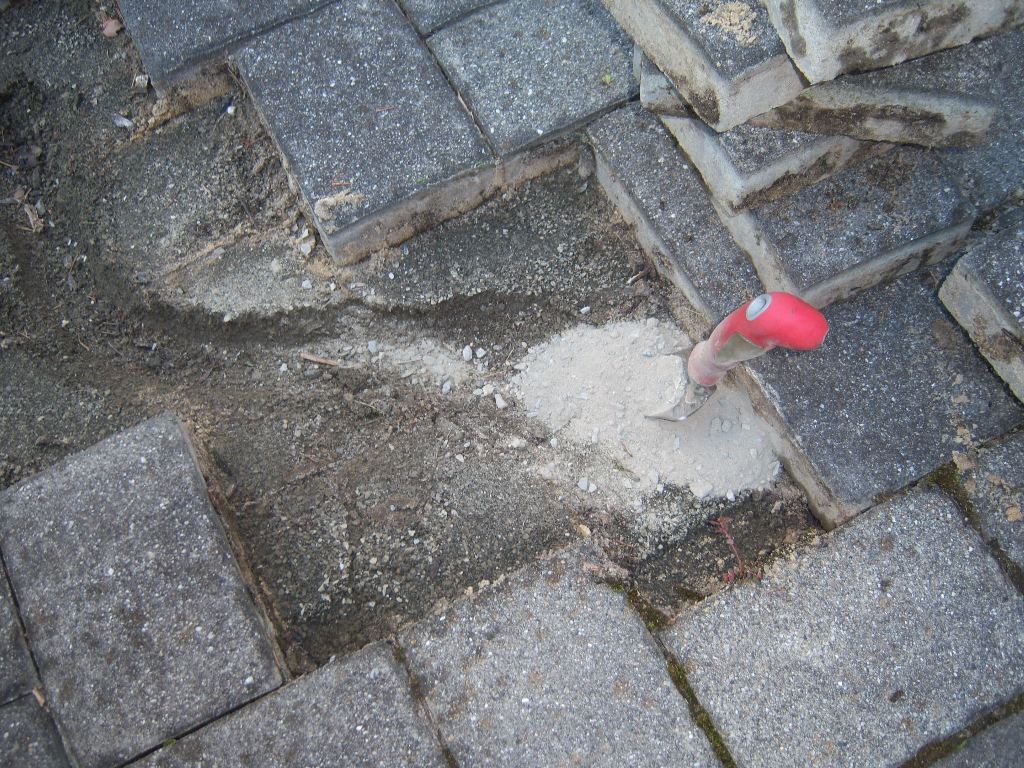
What’s good about this is that the walkway will surely be short-term fortified. What’s bad, best I can tell, is that I’m now locking these pavers together and not really doing anything significant to deter further burrowing.
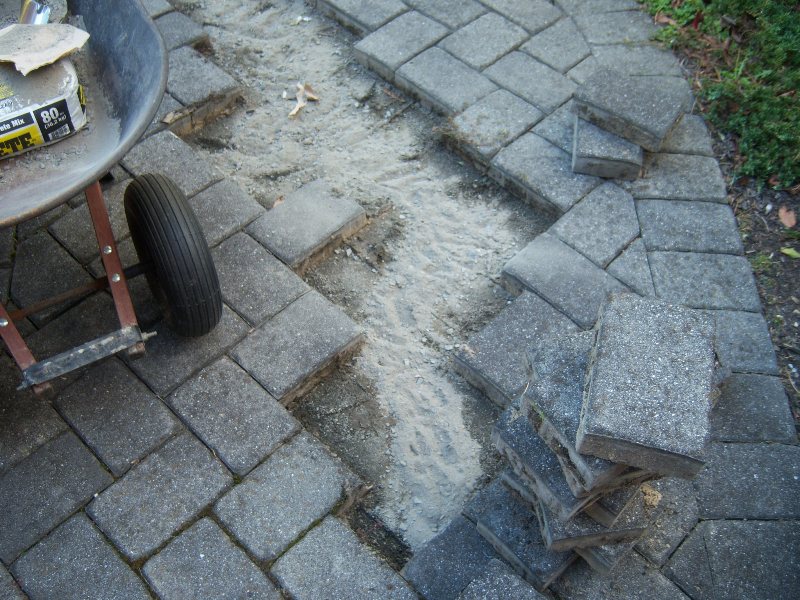
Nevertheless, the backfill continues and when I have enough material in place, I start replacing the pavers one-by-one, tamping as best I can to get a snug and level fit. Work gloves were extremely helpful to protect fingers while positioning the stones here…
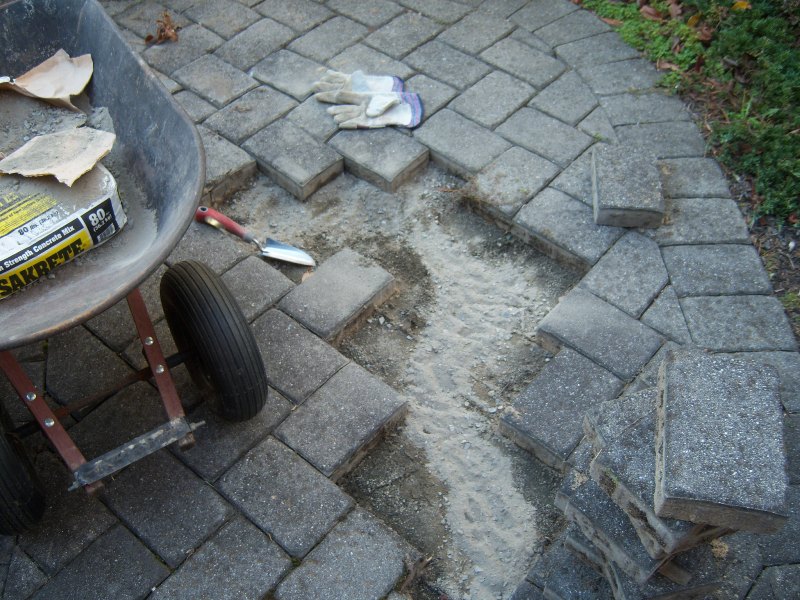
Once all is in place, I used a polymer fortified paver jointing sand to hold things together even more tightly. I like to use polymer [basically plastic] fortified sand with pavers; it just lasts a bit longer than regular sand – plus you can buy it in colors to match your stones.
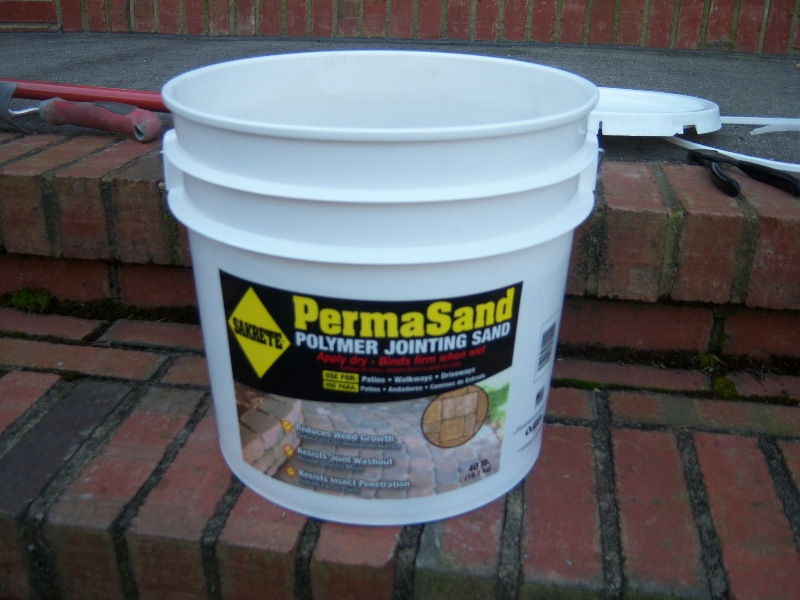
But will polymer fortified jointing sand really do anything to deter these tenaciously-burrowing cute little minions of Satan? (Sorry – I got frustrated again.)
Seems unlikely. It does, however, look quite nice – and it made me feel a tiny bit better knowing I might be making their job just a tiny bit harder!
This gets carefully sprinkled onto dry pavers and brushed in using a push broom…
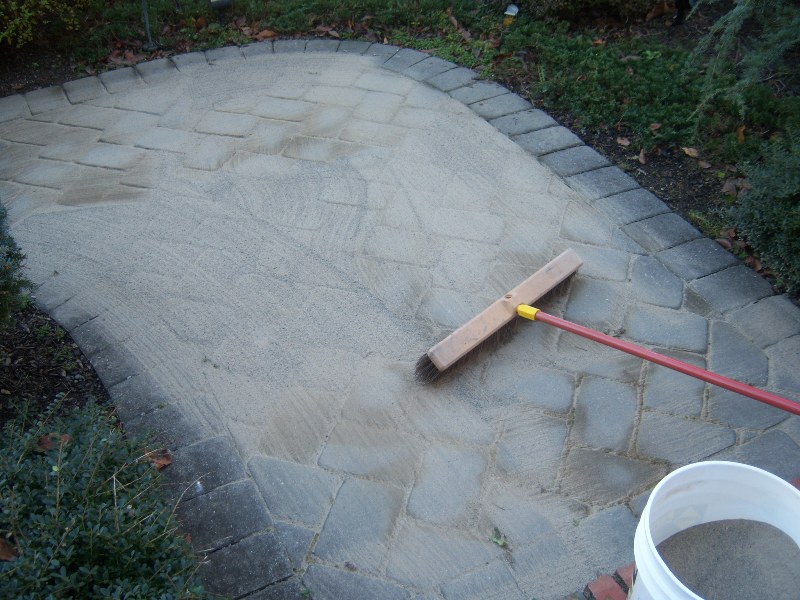
And finally, a very light spray of water is applied as shown, and it needs to cure overnight.
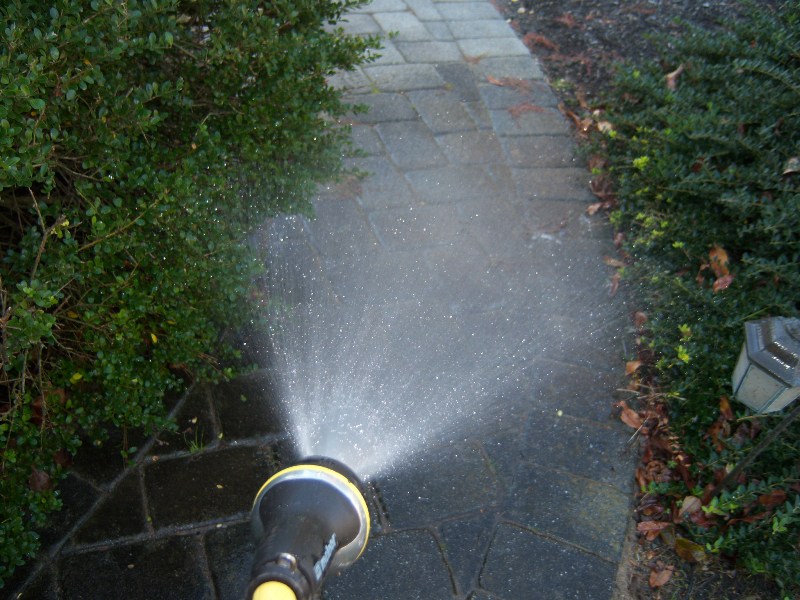
Be sure to refer to the manufacturer’s instructions if you’re using a product like this; you may need to ensure a certain number of hours will be rain-free. You may also need to be sure no extra material remains on the paver surface as there’s a chance of staining. This polymer-fortified jointing sand product seems to have some great Amazon reviews, if you want to take a look.
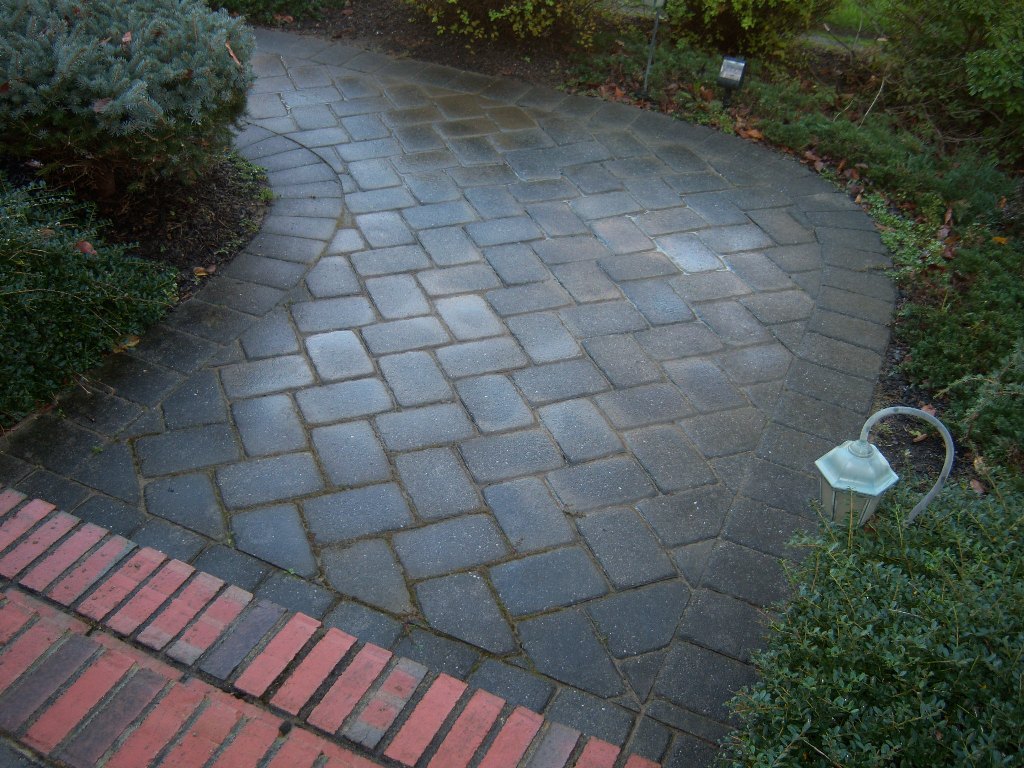
A Stable Paver Walkway
Once complete, my walkway is stable once more – for the present, anyway… We’ll see what the spring brings once these rodents (I mean, uh, ‘cute little Chipmunks’) return and start simply burrowing where there’s no concrete under the paver stones. It may very possibly become an ongoing battle.
Does anyone else reading have any personal experiences and remedies you can share below?


Tried moth balls, cinnamon, some manufactured rodent “repellents” even boiled down habanero broth to no avail, nothing stops chipmunks!
You have inspired me this morning, Richard – I’ve just updated the article to include a link and photo for chipmunk cage traps. Well, it was you and another friend who went to actual POISON STATIONS only to find the “chipmunks playing in them.” Yup – that’s a proper quotation right there!!
So it’s my fault the chipmunks were playing in the poison stations. I put them out just before the winter and failed to check them in the spring and until now. Just checked them and all the poison was gone! I’m optimistic that means the poison was eaten by now deceased chipmunks and new family is now accustomed to the stations? I just refilled them all and “calendarized” my upkeep. Hopefully, this will control the population…
A few years ago, one burrowed under my walkway, causing it to collapse. I had to chop out a 15 foot section, repack the base and learn how to use cold patch.
We had our bluestone patio reset two years ago, 20 years after it was installed because some areas had sunk/heaved. Now one area has completely caved to the point where we can see underneath the stone. We have a 9 inch base of crushed rock with 1 inch leveling sand on top and the masons used polymer sand. I asked them to come look at the caved area and they quoted me almost $2,900 to reset an 88 sq. ft. area! They charged us $4,600 to redo the 270 sq. ft patio two years ago. Their quote is almost twice the cost per sq. ft. to reset that one area. They said it’s chipmunks causing the area to cave in. It’s hard to spend thousands when the chipmunks will just wreak havoc again.
Same problem here too although mine are not chipmunks but mice. I have peppermint oil which I’ll try, but it’s driving me a bit insane as they are burrowing faster than I can pop sections of tile out and refill. I have found areas where they are excavating (large pile of sand under a bush). I’ve been using a colander and sifting out the sand from other “rock” and using it but may try the polymer instead and possibly concrete.
Hello,
We are in the same very frustrating situation. We are redoing our raised paver patio right now for the second time in two years due to chipmunk damage. The patio leads to our front door. Two years ago we did all of the same things you mentioned. I found this post today while researching to see what else we can try. We removed all of the pavers last night and the top layer of polymer cement sand. As I am typing, I am watching the chipmunk dig thru the peat gravel! After more research, I found that a layer of hardware cloth might do the trick? Has anyone tried that? We cannot do this project every two years!
Hi Molly –
If I was still having this problem (especially given you just fixed this only 2 years ago – and are now fixing it again), I’d try what Erik mentions below in his 10/23/18 comment. But with the stone he’s suggesting as a base (or as a perimeter border): bigger and sharper than pea gravel. Especially given the visual you so clearly convey with your writing above… watching that chipmunk dig through your new gravel as you type! (I’d LOVE to see a photo of that, BTW.) Other than that, you can perhaps try few natural deterrents as listed in the bottom of this companion article here. Or, dare I say it, as much as I hate to… maybe get a cat?
You are not alone, we have this problem also. We live the woods with lots of wildlife. Pro’s installed the same style pavers as you have shown here – pavers on top of a compacted gravel/sand base and we used polymetric sand in the cracks. After a few years, the chipmunks/moles ruined it (dug underneath). So we dug up the pavers and re-packed the gravel/sand base and re-applied more polymetric sand and it lasted for a year or so but now the chipmunks have ruined it again – we have a very uneven patio with sink holes everywhere. Am thinking that maybe some sort of metal layer that the creatures can’t chew through and then concrete and lay the pavers on top of that…so frustrating.
Yup – the price we pay for living with wildlife, clearly! (Aside from the chipmunks, I have a lot of deer and groundhogs too… the groundhogs are extremely high risk with the “tunnels” they dig. Some are a good 5 inches in diameter. They’ve stayed in the far reaches of my backyard thus far – away from everything. As long as they stay there, we ‘live in peace’ together.)
Sounds like you’re more in the country than I am, Mary, and this is much higher impact for you if it’s affecting your entire patio’s stability. I’m not a mason – but I am an engineer, by day. And if your entire patio is collapsing like this, and with some regularity, I’d definitely consult with 3-4 masons (perhaps those recommended by your township inspectors – as this problem will likely be known to many there) and gather local expert opinions. My “guess” would be that a concrete base might be best for you, as you’re suggesting as well. But best to consult with the local experts, I find, as every area has its special nuances. Hopefully – this is of some help. But at a minimum… I definitely feel your pain, and I hope you get get this resolved so you can spend more time enjoying your patio and less time repairing it. Best of luck to you.
Firstly, the walkway looks great finished. Nice workmanship, and I commiserate with your loathing of these burrowing saboteurs.
As for the rodents… a fundamental problem that was partially addressed here is the substrate for your pavers – from the looks of it, everything is laid on bare, compacted dirt. This is easy to work with for everyone, rodents included.
Working in gravel beneath the pavers – even if it’s just in a french drain form along the edges – will greatly deter burrowing beasties that don’t want to bash their toes against rocks. Pack with sand or mix and compact with your site soils. How deep you go depends on what’s endemic to your area, but I like to have at least 6″ graveled down at the edges for the larger rodents and 1-2″ beneath the entire length of the walkway. 3/4″-1 1/2″ crushers are a nice size to work with and will stop mice, chipmunks etc. – though it helps to have larger rocks mixed in at the edges to make it harder on a determined squirrel.
Wow – Excellent input, Erik; thanks so much for your insight here – this makes perfect sense. As I look over some of those initial photos above (of me re-seating and stabilizing the pavers), I think back to when we did my driveway from scratch: asphalt installed over a very significant stone base. This may only be a walkway, but there’s clearly next-to-nothing underneath there. The 6″ of gravel around the walkway perimeter is a wonderful suggestion as a “after the fact” type of remediation. Stupid [but cute] chipmunks! Thank you!!
I found a loose paver, and stepped on it a little firmer to assess, and found it was entirely hollow beneath – I know we have one or more super adorable chipmunks that live in the overgrown garden attached to the pavers… I bet its the same! Call it a trio of confirmed hits. This post came up when I searched for it, thanks for taking the time, I’ll try out some concrete and hope for the best as well. Cheers.
How are your pavers holding up after four years? Any more chipmunks? I am in the midst of leveling out some pavers around the pool. I kept noticing what i thought to be as run off from the adjacent flower beds. After looking at your photos, its a chipmunk farm! I have no idea yet how to resolve this issue but I thought I would check in with you to see how its been since you fixed them in 2014.
Four years later, and the paver walkway is just fine Carrie. It’s funny… when I wrote this article, I was being a little ‘tongue in cheek’ with my criticism of the chipmunks as you could tell, I’m sure. But this could be a real problem.
I genuinely never saw this before, and you’re the only other person that seems to have the same issue. So, given we’re a “group of two,” there are key questions to ask here: Is my walkway fine because of the concrete as a deterrent? The polymer-fortified sand? Both? Neither?? I can’t really be sure. I just walked outside, though, and took a couple of photos so you can see for yourself, below. Would really love to hear how it goes with your issue on this front, and if you want to send some photos (via the contact page), I’ll even get them up on the site. Best of luck and hope to hear from you!
You are not a club of two! I have a brick walkway with pretty wide spacing between bricks. Recently, a number of bricks collapsed at the end of the walkway. I spent a couple of hours pulling up the bricks, laying in some gravel as a base, followed by a layer of sand. I didn’t have sand to fill in the gaps.
Twenty four hours later, my work was largely undone. I caught the a chipmunk digging up the gaps and took a picture (if I knew how to post a picture here, I’d post it).
I’m going to try mixing some rodent control granules and cayenne pepper in with some jointing sand to keep the little f*cker away. TBD how that works but we’re hosting a large party on Saturday – I’d prefer that my guests not twist their ankles on wobbly bricks..
Here is the picture I referenced in my comment earlier. There may be a nest under the railroad tie at the bottom of the frame, which probably motivated the digging.
Love the photo, Steven – I haven’t been able to catch my rodents in the act like this. It’s good for one’s sanity at some level to see them in action, I guess. My two photos (just above yours) were from 2018 – when I was mentioning I had been “fine” for 4 years. But I got hit again this year, so I did another repair. I think the maintenance will simply be with us for the long haul. It’s nice to live near so much wildlife, but this is part of the price we pay. Would be great to hear if your cayenne pepper works as a deterrent!